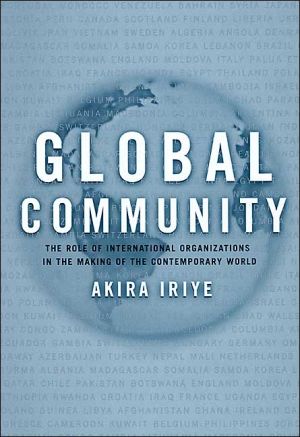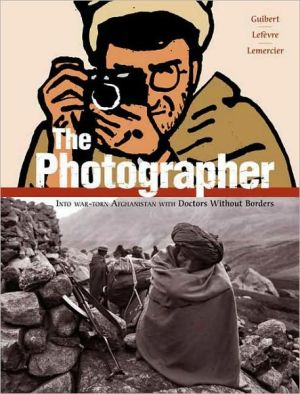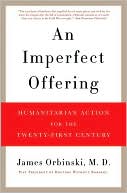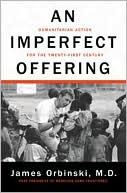Global Community: The Role of International Organizations in the Making of the Contemporary World
The "global community" is a term we take for granted today. But how did the global community, both as an idea and as a reality, originate and develop over time? This book examines this concept by looking at the emergence, growth, and activities of international organizations—both governmental and nongovernmental—from the end of the nineteenth century to today. Akira Iriye, one of this country's most preeminent historians, proposes a significant rereading of the history of the last fifty...
Search in google:
"This small book makes a large and provocative argument. According to Akira Iriye, scholars have been so preoccupied with high politics and state-centered activities that they have failed to pay attention to other phenomena that better explain the emergence of the contemporary world. This history of international organizations in the twentieth century is a pioneering effort to remedy that shortcoming. Iriye opens up exciting new vistas on globalization and recent international history."—Frank Ninkovich, author of The United States and Imperialism"This remarkable book shifts the focus of postwar international history away from Cold War rivalries and onto the astonishingly robust growth of international non-governmental organizations. A powerful voice for internationalism, Akira Iriye should be required reading for the twenty-first century."—Emily S. Rosenberg, author of Financial Missionaries to the World"Non-governmental organizations now number in the tens of thousands and have for at least a century been shaping international affairs, not to mention our individual lives. Akira Iriye's thesis—that these organizations (whose historical evolution and context we've known far too little about until this pioneering work) pieced together a globalized community while state politics often threatened to tear it apart—is vigorously argued, full of insight into historical turning points, and another of his original contributions to international history."—Walter LaFeber, Cornell University
GLOBAL COMMUNITY\ THE ROLE OF INTERNATIONAL ORGANIZATIONS IN THE MAKING OF THE CONTEMPORARY WORLD \ \ By AKIRA IRIYE \ University of California\ Copyright © 2002 Regents of the University of California\ All right reserved.\ ISBN: 0-520-23127-9 \ \ \ \ Introduction\ This book seeks to examine the roles that international organizations play in modern world affairs. There are three principal reasons for undertaking this task. First, there is the obvious fact that international organizations have steadily grown in number and in the scope and variety of their activities since the late nineteenth century, to such an extent that the contemporary world would be incomprehensible without taking them into consideration. Second, most writings on modern world affairs, especially by historians, have nevertheless almost entirely ignored this fact. This scholarly void somehow must be filled. And finally, a focus on international organizations, rather than nations and states, as units of analysis provides a fresh perspective on the evolution of international relations and enables us to reconceptualize modern world history. For example, the phenomenon known as globalization might be better understood if we examined the ways in which international organizations have for decades been seeking to establish transnational connections, politically, economically, and culturally. \ Roughly speaking, there are two types of international organizations: intergovernmental organizations and international nongovernunental organizations. The former category consists of institutions that come into existence through formal agreements among nations and represent their respective governments. The United Nations is the best-known example, but several thousands of them exist today. The latter, in contrast, refers to associations that are established by private individuals and groups. According to the Economic and Social Council of the United Nations, any international organization that is not established by an agreement among governments is an international nongovernmental organization.' This, however, is too broad a definition, and in this study a nongovernmental organization will be more narrowly construed as a voluntary nonstate, nonprofit, nonreligious, and nonmilitary association. The voluntary nature of these organizations - that is, their openness to all those who wish to join - distinguishes them from others that are restricted to certain categories of people, whether nationality, gender, religion, class, region, or any other division. Business enterprises in most countries are, of course, nongovernmental organizations, but their profit-seeking nature distinguishes them fundamentally from the rest. Churches, synagogues, cemeteries, and other religious bodies are also mostly nongovernmental institutions, but for the sake of analysis, this book will mention them only when their activities are secular, such as humanitarian relief and cultural exchange, rather than confessional or evangelical. The distinction is a tenuous one, but to include a discussion of religious institutions would make the study of nongovernmental organizations, at this stage of scholarship, unmanageable. Last, it seems to make sense to exclude the consideration of terrorist societies and other armed gangs; a nongovernmental organization by definition will not have its own military force, given that, in theory at least, the state is supposed to monopolize arms and "violence." In reality, there are nonstate, indeed antistate, groups with their own arms that engage in violent activities. Although the relationship between such groups and unarmed organizations is a serious question in some parts of the world, this book will touch on the issue only in a few instances, focusing instead on activities by nonmilitary organizations.' Thus rather narrowly defined, international nongovernmental organizations constitute only a part of non-state actors. Even so, there are almost thirty thousand of them today, and one purpose of this book will be to trace their evolution over time.\ It would be neither feasible nor meaningful to try to be comprehensive or to generalize about the activities of thousands of international organizations, intergovernmental or nongovernmental. Instead I focus on six types of organizations: those dealing with humanitarian relief, cultural exchange, peace and disarmament, developmental assistance, human rights, and environmentalism.\ The choice of these six categories is arbitrary, for many other organized activities exist in the world, as well as alternative ways of categorizing them. Harold Jacobson divides international organizations into three broad types: those concerned with security and peace, with trade and other economic affairs, and with "social welfare and human rights." Evan Luard classifies international organizations by the functions they perform, such as sea transport, energy, and development; altogether Luard lists fifteen different types of functions. Lyman Cromwell White's seminal work on international nongovernmental organizations enumerates twelve fields of activity such organizations are engaged in, ranging from "communications, transport, and travel" to "pursuit of peace." A recent book by Lester M. Salaman and Helmut K. Anheier on nonprofit organizations suggests twelve "major activity groups": culture and recreation; education and research; health; social services; environment; development and housing; law, advocacy, and politics; philanthropic intermediaries and voluntarism promotion; international activities; religion; business and professional associations and unions; and groups "not elsewhere classified." These categories define domestic non-governmental organizations except for "international activities," which involve cross-national functions and efforts. Within this category Salaman and Anheier include seven types of activities and organizations: exchange/friendship/cultural programs; development assistance associations; international disaster and relief organizations; international human rights and peace organizations; multipurpose international organizations; support and service organizations; auxiliaries, councils, standard setting and governance organizations; and international organizations not elsewhere classified.\ These are all useful classificatory schemes. Since, however, this book's main goal is not to be comprehensive but to illustrate the roles that international organizations play in shaping the contemporary world, I focus on those organizations whose activities in the six areas mentioned earlier seem to have made a significant difference in international affairs. However limited in scope, an examination of some of these organizations' agendas and activities seems worthwhile, if only because historians have not paid them the attention they deserve.\ Scholars have written volumes on the history of the contemporary world, or more specifically of modern international relations, but few such volumes seem to contain more than a passing reference, if at all, to international organizations.' This lack of scholarly attention by historians is puzzling, given that political scientists have carefully studied international organizations since at least the 1970s. Such scholars have produced important surveys and case studies of international organizations, and some writers have incorporated these studies into international relations theory. At the same time, however, the bulk of the political science literature remains nonhistorical. Most writings by nonhistorians on international organizations tend to focus on very recent developments or current phenomena. Even when discussing some episodes from the past, political scientists appear to be more interested in drawing policy-relevant conclusions from them than in placing them in a historical context. While all such work is valuable, historians may have a different perspective and wish for a more systematic examination of the historical development of international organizations, their activities, and their possible impact on world affairs. In this book I attempt to provide such an examination.\ One basic and obvious reason why historians of international relations have not been paying sufficient attention to international organizations is their preoccupation with state-centered activities: political, diplomatic, military, and economic. States and their activities constitute geopolitical "realities," and historians have been examining these realities as they have changed over time through interstate interactions and clashes. Writers have focused on such themes as "diplomacy," "the rise and fall of the great powers," "the causes of wars," and "the origins of the First (or the Second) World War," to cite a few examples from books with these titles. So long as one continues to be fascinated by these topics - and of course they remain legitimate objects of scholarly inquiry - it will be easy to neglect international organizations, dismissing them as irrelevant to the diplomatic and military dramas being played out by the states. The same thing may be said of those works that have focused on the economic aspect of international affairs. Apart from a few that present the movement of goods, capital, and labor as world- wide phenomena, most studies by historians seem to retain their national frameworks, examining foreign economic policies of various countries or exploring trade, banking, and other issues among them."\ A fundamental assumption seems to underlie the study of international relations through an examination of diplomacy (political and economic) and war: international affairs are seen as a sum of activities of nations as they try to safeguard their respective interests and enhance their power positions in the world while engaging in negotiations and preparing for possible clashes of interest. This is a conflictual (or "anarchical") view of the world, whether conflict is seen as latent or real." In such an anarchical situation, international organizations will be of no importance except as means for promoting national interests. But these organizations will make a difference if one construes world affairs in a different way. If, for instance, one is to explore possibilities for world order rather than anarchy, one will have to take the activities of international organizations more seriously, simply because the majority of these organizations are by definition oriented toward seeking international order, cooperation, and interdependence. Of course, sovereign states may also cooperate with one another to establish some sort of international system, and historians have written volumes on "the Westphalian system," "the Vienna system," "the Versailles system," "the Yalta system," and the like." These systems could be so defined as to exclude any participant except states. But that would be a narrow view of the international system and ignore the fact that international organizations have existed side by side with the states for over a century and have contributed to the making of the contemporary world.\ It is true that state-centered approaches to the study of war and diplomacy have begun to be challenged by historians who stress the social, ideological, and cultural bases of a country's foreign affairs and conceptualize international relations as intercultural relations. Excellent monographs have been published on the effect of social relations (involving issues of gender, class, and ethnicity), ideology, and culture (such as historical memory) on foreign policy." While these studies elaborate how such nonstate, nongeopolitical factors have affected the processes of foreign policy decision making, others have examined non-state, nonofficial dealings across national boundaries, such as missionary activities and cultural exchange programs. All these writings have enriched our understanding of international relations by broadening the scope of inquiry beyond the state. Nevertheless, most of them still take nations as units of analysis; their inquiry may go beyond the formal governmental apparatus and embrace society and individuals, but they assume that social and cultural phenomena, just like diplomatic and military affairs, are comprehensible within a national framework. International organizations have, therefore, little room in such analyses. The world consisting of societies and cultures may be different from one made up of sovereign states, but it is still a world with national and territorial boundaries.\ International organizations, on the other hand, assume that there is yet another world, one that is produced by forces that cut across national frontiers. These forces create networks of shared interests and concerns that go beyond national interests and concerns. The transnational migration of people and the deterioration of the natural environment are but two of the most obvious examples. These are transnational phenomena to be addressed as much by intergovernmental organizations and non-governmental organizations as by independent states. And to the extent that international organizations effectively reflect transnational concerns and in turn strengthen the sense of global, human interdependence, they may be said to be creating an alternative world, one that is not identical with the sum of sovereign states and nations.\ The emergence of such a world has been noticed by an increasing number of observers, who have given it various names: "the society world" (to distinguish it from the world of nation-states), "international society," "transnational civil society," and "the global public." These terms describe a global arena in which individuals and organizations other than sovereign states come together and engage in activities separate from those pursued by national governments. That is why terms such as "global civil society" and "transnational civil society" have gained in popularity." "Civil society" is a term that has been long in use to describe domestic nonstate actors, including business enterprises and religious organizations as well as private associations, and it may be difficult to postulate an exact analogue to it in the global context, where there is no super-entity corresponding to the state apparatus. Nevertheless, "international civil society," like "the society world" and similar terms, suggests the existence of a world community that is not interchangeable with the world consisting of independent nations. International organizations may be viewed as one among the many ingredients of transnational civil society, one of many forces that have linked different parts of the world. These forces are, in that sense, more properly called "global," or even "human," than "international." International history may have been in existence only since the seventeenth century, but global history has had a longer life, and human history a longer one yet.\ Thus conceived, the study of international organizations may be viewed as one way of examining the phenomenon known as globalization.\ \ Continues...\ \ \ \ Excerpted from GLOBAL COMMUNITY by AKIRA IRIYE Copyright © 2002 by Regents of the University of California. Excerpted by permission.\ All rights reserved. No part of this excerpt may be reproduced or reprinted without permission in writing from the publisher.\ Excerpts are provided by Dial-A-Book Inc. solely for the personal use of visitors to this web site. \ \
PrefaceIntroduction11The Origins of Global Community92The New Internationalism373Beyond the Cold War604More States, More Nonstate Actors965The Growth of Civil Society1266Toward Global Community157Conclusion195Notes211Index237







